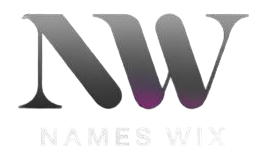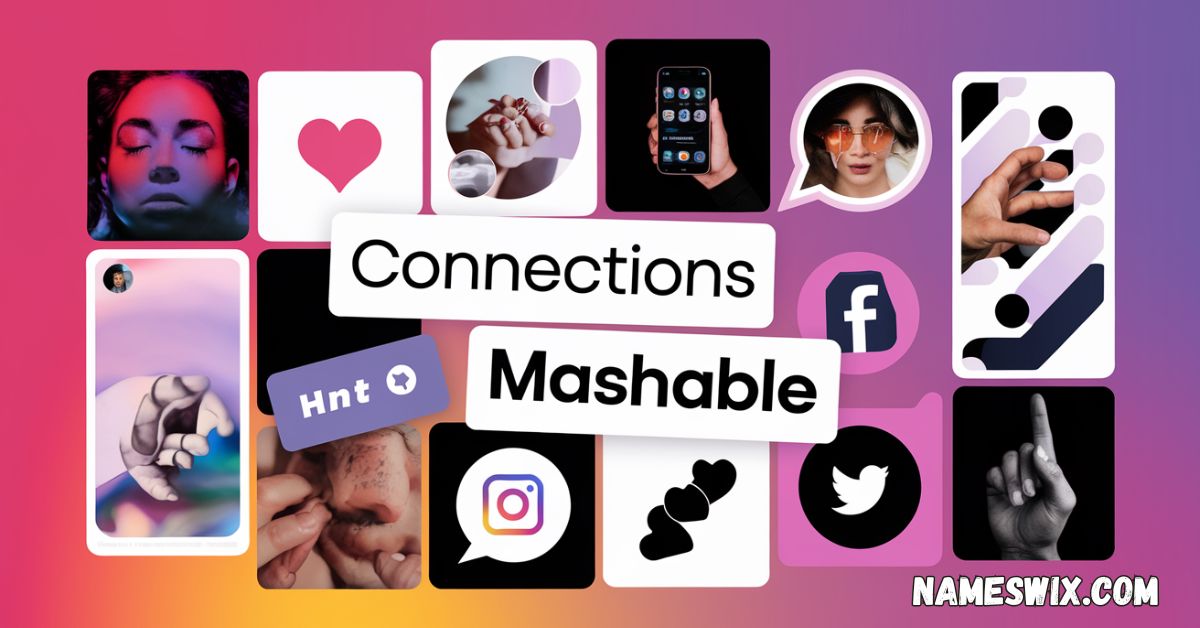Connections Hint Mashable is a helpful guide for players of the NYT Connections game. It gives clues and tips without giving away full answers. These hints help you find word groups in the puzzle. Mashable makes solving the game easier and more fun.
If you love word puzzles but get stuck, Connections Hint Mashable is your best friend. It gives just enough help to keep you moving forward. You won’t feel lost or frustrated. With these hints, you can enjoy the challenge and improve your skills.
Mashable offers daily hints that match the New York Times Connections puzzle style. The hints focus on themes, word links, and useful context. Many players trust Mashable for clear and smart clues. It’s a great tool to master the game faster.
What Is the NYT Connections Puzzle?

The New York Times Connections puzzle is a logic-driven word challenge that asks players to organize 16 words into four color-coded word groups. Each group contains 4 words that are related by a common theme. These themes may include vocabulary challenges, word association puzzles, word pattern recognition, or lateral thinking puzzles.
The key to mastering this word grouping puzzle lies in identifying themed word sets. For example, a group might be animals (like tiger, lion, bear, wolf), or they could be items in a kitchen (such as spatula, ladle, knife, whisk). Sometimes the categories are obvious, but other times the creators use clever wordplay, puns, or double meanings to confuse you.
What makes the NYT Connections game stand out is its mix of simplicity and complexity. You’re just matching words — but those thematic connections can be tricky. That’s why players rely on resources like Connections Hint Mashable to guide them through this fun and challenging daily word game.
NYT Connections Hints & Answers – Today’s Edition
For those playing the NYT daily puzzle, today’s edition brings a moderate level of difficulty. You’ll need a sharp mind to spot the category deduction needed to solve the puzzle. Using Mashable Connections hints, we can break down today’s puzzle and help you avoid confusion while still keeping the fun intact.
The puzzle consists of a 16‑word grid puzzle, and the goal is to form four groups of four. Each group is marked with a color to indicate difficulty:
Yellow is the easiest,
Green is slightly harder,
Blue is challenging,
Purple is the trickiest.
Connections Hints for February 22, 2025
Today’s puzzle is filled with interesting word associations and subtle themes. If you’re stuck, here are helpful Mashable Connections hints to guide your thinking.
Hints:
Yellow Group Hint: Think about what you’d commonly find in a school classroom.
Green Group Hint: This group includes words related to insects or bug-like creatures.
Blue Group Hint: All these words are types of movement or motion.
Purple Group Hint: These are words that can double as names or actions — think vocabulary challenges with double meanings.
These hints are designed to spark your thinking without giving away the entire puzzle. This approach keeps the logic deduction part fun while offering just enough game hints and clues to help solve the grid.
Answer Key for Today’s NYT Connections
If you want the full NYT Connections answers for February 22, 2025, look no further. But a quick warning — spoilers ahead!
Here are today’s Connections color categories and word groupings:
| Color Category | Group Theme | Words |
| Yellow | Classroom Items | Chalk, Ruler, Desk, Eraser |
| Green | Insects | Ant, Beetle, Moth, Wasp |
| Blue | Types of Motion | Roll, Jump, Slide, Swing |
| Purple | Double Meaning Words | Bark, Pitch, Rock, Spring |
This breakdown helps you see how each word fits into its group. Notice how category deduction plays a role, especially for the purple group, which requires more abstract thinking.
Recent Connections Hints & Solutions (Past Days)
Looking at past NYT Connections solutions can help improve your pattern recognition game. Here are the puzzles from the last two days:
February 21, 2025:
| Color | Category | Words |
| Yellow | Primary Colors | Red, Blue, Green, Yellow |
| Green | Pasta Types | Penne, Macaroni, Fettuccine, Spaghetti |
| Blue | Weather Conditions | Snow, Rain, Hail, Wind |
| Purple | Emotions | Joy, Sadness, Fear, Anger |
February 20, 2025:
| Color | Category | Words |
| Yellow | Animals | Dog, Cat, Bear, Fox |
| Green | Musical Instruments | Violin, Flute, Drums, Trumpet |
| Blue | Body Parts | Hand, Foot, Eye, Nose |
| Purple | Occupations | Chef, Pilot, Teacher, Nurse |
Reviewing past puzzles helps develop a mental library of themed word sets, making it easier to spot logical connections in future puzzles.
Strategies to Solve NYT Connections Faster

Improving your puzzle-solving strategy takes practice and a few smart techniques. Here are some NYT Connections strategies to help you master the vocabulary puzzle faster and more accurately.
1. Identify Obvious Connections First
Start with what’s easiest. The yellow group is often the most straightforward, so scan the grid for words that belong in a familiar category. These might relate to animals, food, or common objects. Solving this group gives you confidence and narrows down the remaining choices.
2. Beware of Decoys
The puzzle designers are clever. They add words that look like they belong to the same group but are actually false connections. For example, “apple” and “orange” might appear to be fruits, but if “Orange” is part of a color group, not a food group, you could get misled. This is where lateral thinking and logic deduction come in.
3. Leverage Word Associations
Think thematically and use your background knowledge. If you notice the words “Rome,” “Tokyo,” and “Paris,” you may be looking at countries or capital cities. This word association puzzle approach is one of the most effective techniques in your toolbox.
4. Take Breaks
Don’t be afraid to step away. This brain teaser benefits from a fresh mind. When you return, you’ll often see connections you missed before. It’s a simple trick, but it works surprisingly well for word groupings.
5. Practice Regularly
The more you play, the better you’ll get at pattern recognition and category deduction. Try solving the puzzle every day and review past puzzles. Use resources like Connections Hint Mashable to stay updated and improve your puzzle-solving strategy.
Where to Find NYT Connections Hints Daily
If you’re wondering where to find NYT Connections hints daily, you have several great options. One of the most trusted sources is Connections Hint Mashable, which offers smart, insightful clues that guide players without spoiling the entire game. Mashable Connections hints help with game hints and clues that align with the style of the New York Times word game, making them perfect for players in the USA who want both fun and challenge.
Other sources include Reddit communities like r/NYTConnections, where players share daily Connections puzzle tips, hints, and solutions. You can also check TechRadar or CNET, which occasionally post updates and strategies for word games, including NYT Connections. Many YouTube channels also offer visual walkthroughs for those who prefer video help.
How Mashable Provides NYT Connections Hints
When players get stuck on the NYT Connections puzzle, they often turn to Mashable Connections hints for help. What makes Mashable such a valuable resource is how it gives game hints and clues that help you think about the puzzle differently—without giving away the answer too quickly. The hints are made in a way that keeps the challenge fun and still allows players to learn and improve.
Read More : 450+ Powerful and Catchy Shark Names & Generator [Best Ideas]
The Purpose of Hints
The main reason Mashable offers hints is to support your puzzle-solving journey without ruining the game. These Mashable Connections hints serve as a bridge between confusion and understanding. The goal is not to hand over the NYT Connections answers, but to make you think harder and smarter.
Indirect Suggestions vs. Direct Clues
Mashable usually prefers to give indirect suggestions instead of direct clues. For example, instead of saying “this group is about animals,” they might say something like “think about things that live in the forest.” These kinds of hints train your brain to use pattern recognition and lateral thinking, which are key skills in the NYT Connections game.
Types of Hints Offered
These are the most common type of help found in Connections Hint Mashable. A thematic hint focuses on the big idea that connects four words together. If the theme is “sports,” Mashable might say something like “think about activities that require a ball.” These hints help players identify the themed word sets that are the core of every NYT Connections puzzle.
Word Connections
Sometimes, Mashable uses word connections to help you notice how words relate to each other. This might include synonyms, homonyms, or vocabulary puzzle challenges where words share the same base or usage. This builds your ability to think deeply about logical connections and builds vocabulary at the same time. For example, if you see “rock,” “spring,” “pitch,” and “bark,” a word connection hint might say, “These words can all be verbs and nouns.”
Contextual Guidance
One of Mashable’s strongest features is how it uses contextual guidance. These hints offer a short explanation or background to give more meaning to the group. For example, if the category is about planets, the hint might say, “Think about things you’d find in space.” This gives the puzzle context and helps you stay on track. Contextual guidance is especially helpful in the purple group, where words often have double meanings or cultural references.
Mashable’s Hint Format

One reason players love Mashable Connections hints is that they are easy to read and understand. The hints are written in plain English, which means players from all backgrounds and skill levels can enjoy them. This level of clarity and accessibility is important because it allows everyone to participate in the fun of the New York Times word puzzle without feeling lost. The format avoids confusing words or expert-level language so more people can solve the puzzle confidently.
Progressive Complexity
Mashable’s hints often grow in difficulty as you read them. The first hint might be broad and simple, while later hints become more specific and direct. This progressive complexity helps you warm up mentally before tackling the hardest parts of the puzzle. It also mirrors the structure of the NYT daily word game itself, which begins with easier groups like yellow, and ends with tricky ones like purple. This smart layout is great for learning how to solve Connections word groups more effectively.
Illustrative Examples
Whenever possible, Mashable includes illustrative examples to make the clue easier to understand. These examples may not use words from the actual puzzle, but they show how a group might work. For instance, if the group is about desserts, the example might include “cake, pie, pudding, and cookie.” Seeing this kind of example helps players grasp how word groupings function. It’s like getting a small training session before diving into the puzzle itself.
Frequently Asked Questions
What is the hardest level in Connections?
The hardest level in Connections is the purple category, known for its tricky themes and abstract associations that challenge even experienced players.
Can I play old Connections games?
Yes, you can play old NYT Connections puzzles by accessing the puzzle archive on the official New York Times Games website.
What is the Connections 4 words game?
The Connections 4 words game is a daily word puzzle from the New York Times where players group 16 words into four sets of related terms.
What is a Connections strategy?
An effective Connections strategy involves identifying clear word groupings first, avoiding misleading choices, and applying word association and pattern recognition techniques.
Final Thoughts – Master the Game with Connections Hint Mashable
The New York Times Connections puzzle is more than just a game — it’s a daily mental workout. With the help of Connections Hint Mashable, players can enjoy the challenge while having the support needed to grow. Whether you’re solving today’s 16-word grid, learning from previous NYT Connections answers, or practicing smarter Connections strategies, there’s always room to improve.
Keep coming back for daily hints, answers, and tips to become a master of this vocabulary challenge. And remember — every day is a new opportunity to train your brain and find joy in the power of word groupings and logical connections.

Michael James, CEO of Nameswix.com, loves solving creative challenges and helping people find the perfect name. Names Wix isn’t just a website. it’s a platform that makes it easy for anyone to discover unique names for their groups and chats.

